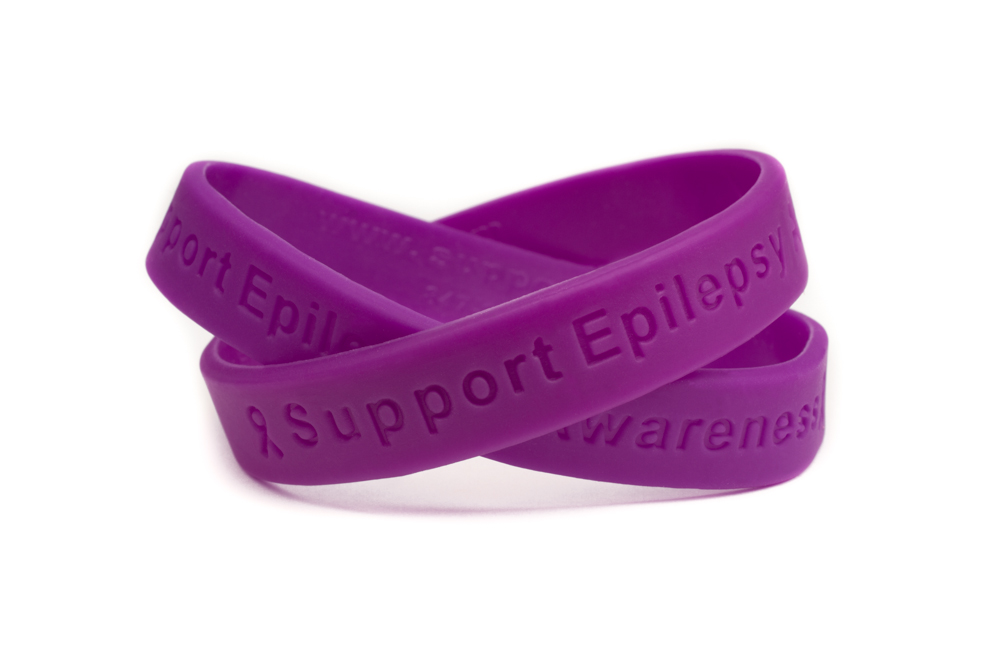You Are Not Alone Parent Toolkit
A support program for parents of teens who have epilepsy
Support programs can help
Parents know that growing up is tough for any teen. But a teen with epilepsy may have more anxiety and confusion. When other people like teachers and other teens don’t understand epilepsy, they might treat that person differently. This can make the teen feel like they are alone.
Parents play an important role in preventing this. When children with epilepsy become teenagers, parents can teach them to take care of themselves. The materials in these program guides support this effort.

These guides have materials to help parents learn ways to:
- Learn from other parents and families.
- Talk with other parents.
- Discuss issues like:
- Dating.
- Driving.
- Drugs and alcohol.
- Medication.
- Family stress.
- School issues.
- Communication.
- Stigma.
Participate on your own or lead a group
The guides below explain each of the parts of this toolkit and provide suggestions for using them. One guide is for parents and the other is for leaders of parent groups, also called facilitators. Each part can stand alone, but the program works best when using the parts together.
Parent’s Guide
“When my son was little, I could manage the seizures and medications for him…but he isn’t little anymore—it’s up to him. My job has changed—the best thing I can do is to prepare my son to manage his own health and to be there to support and encourage him every step of the way. I want him to keep good seizure control and cope with the ups and downs, but more importantly, not let epilepsy get in the way of his dreams and his life.”
-Patricia Osborne Shafer, RN, MN
Mother of teen with epilepsy
As a parent of a teen with epilepsy, you may be dealing with issues- some more teen related, others more epilepsy specific. This program helps you work through these problems.
Use the parts of this program as conversation starters with your spouse or partner, between you and your teen, or with other family members and friends.
Part 1— Letter to Parents
Read this letter to parents, which was written by a parent of a child with epilepsy, to better understand how this toolkit can help your family.
Part 2— “You Are Not Alone” Video

This documentary-style video features the story of two families who “survived” the teen years. The video does not cover all experiences or viewpoints, but shares the experiences of a few families. The video is meant to spark discussions about what you are experiencing. Because of the realism of the video, a wide range of issues, emotions, and thoughts may arise about parenting a teen with epilepsy.
The video can be watched in its entirety or can be stopped and started for discussion with your teen, spouse or partner, or other family members and friends. It has been edited into nine segments for this purpose.
After watching the video, you may want to start a discussion with your family members about their reactions. The questions to consider may be helpful in the discussion.
Please note: Roxanne’s aunt mentions that Roxanne was diagnosed at an Epilepsy Foundation (EF) affiliate. Not all EF affiliates have clinics associated with them. A diagnosis of epilepsy should only be made by a medical professional.
Part 3— “Rewind” Conversations
You will read the transcripts of three “overheard conversations” between parents and their teens living with epilepsy. Each conversation is “rewound” and followed by a different version of that conversation that demonstrates one way teens think the conversation should have gone.
Just like the video, these conversations address a wide range of issues and emotions that may come from parenting a teen with epilepsy. You may disagree with some of the alternatives presented in the “rewound” conversations. Remember that the “rewound” conversations are meant to spark discussion rather than provide final solutions to the situations discussed.
Consider reading the conversations alone or with your spouse or other adult first. Then, read one scenario at a time with your teen and initiate a discussion on the issues that it covers. After reading the conversations with your teen, spouse, or other adult, initiate a discussion about communication styles and what you can do to improve current communications. Try to focus on actively listening to your teen and affirming what you hear from him or her. You may want to use the suggested questions to stimulate and direct the discussion.
Part 4— “Reach Out” Brochure
Consider reviewing this brochure with your spouse, partner, or other family members and discussing how parenting a teen with epilepsy has affected the family as a whole and each individual family relationship. Together, make a plan of action for nurturing your relationships and yourself. Base the action plan on goals that you set together. If you have never attended a parent support group meeting, seek one out either close to home or online.
Part 5— Resource Guide
The Resource Guide provides additional information, including organizations and online sources for more information on epilepsy and a range of topics related to family and parenting issues.
Part 6— Stationery
Use this set of preprinted sheets to write messages to teachers, neighbors, coaches, employers, or other adults who come into contact with your teen. It is a vehicle for introducing your teen’s condition and advocating for him or her. Note that the information on seizure first aid at the bottom of each page provides an opportunity to educate the reader about the appropriate response to a seizure.
You Are Not Alone: A Guide for Facilitators
On This Page
The CDC’s “You Are Not Alone” program supports parents of teenagers who have epilepsy. The following guide instructs the facilitator (someone who leads group meetings) to use these tools.
If you are a “You Are Not Alone” program facilitator, we recommend that you review all of the materials in the kit to become familiar with the issues that are presented. This can help you:
- Plan for discussions using the questions provided in this guide.
- Plan your own questions.
- Anticipate parents’ reactions to the materials.
- Tailor the discussion to specific issues the parents may want to explore.
- Decide whether to view and discuss the video in one session or view and discuss it in sections.
Part 1 – Letter to Parents
Read this letter to parents, which was written by a parent of a child with epilepsy. It will help them understand how this toolkit can help their families.
Part 2 – “You Are Not Alone” Video
Introduce the video to your viewers by explaining that the documentary-style video features the story of two families and other parents who “survived” the teen years. Share that the video does not cover all experiences or viewpoints, but merely the experiences of several families.
The video is meant to be a catalyst for discussion about what they are experiencing. Because of the realism of the video, a wide range of issues, emotions, and thoughts about parenting a teen with epilepsy may arise. Let parents know this ahead of time and tell them that after the video, they will have the opportunity to discuss their reactions.
After showing the video, consider using the questions linked below to stimulate and direct the discussion. To get parents involved, have them share one or two points that “spoke to them” in the video. If the group is large, you may opt to divide it into smaller discussion groups. You can invite each small group to summarize its discussion and share key points at the end of the session.
Please note: Roxanne’s aunt mentions that Roxanne was diagnosed at an Epilepsy Foundation (EF) affiliate. Not all EF affiliates have
clinics associated with them. A diagnosis of epilepsy should only be made by a medical professional.
Part 3 – “Rewind” Conversations
Let parents know that they are about to read the transcripts of three “overheard conversations” between parents and their teens living with epilepsy. Each conversation is “rewound” and followed by a different version of the conversation that demonstrates one way teens think the conversation should have gone.
As with the video, these conversations address a wide range of issues and emotions that may come from parenting a teen with epilepsy. Some people may disagree with some of the alternatives presented in the “rewound” conversations. Remind them that the “rewound” conversations are meant to stimulate discussion rather than provide final solutions to the situations discussed.
You may choose to read the transcript in its entirety. However, we recommend stopping after each scenario to initiate a discussion with the group, as each conversation raises very different issues. After each scenario, use the suggested questions below to stimulate and direct the discussion.
To get parents involved, ask them if any of the dialogues sounded familiar. If the group is large, you may opt to divide the large group into smaller discussion groups. You can invite each small group to summarize its discussion and share key points at the end of the session. After reading all of the conversations, you may also want to conduct an improvised role-play exercise, where one parent plays the teen and the other plays the parent.
Part 4 – “Reach Out” Brochure
To prepare for the group session, review the contents of the “Reach Out” brochure and develop discussion points and activities that relate to nurturing relationships and self-care. In the session, you can either hand out brochures for parents to read to themselves or have parents take turns reading the sections aloud. After completing the session, you might also consider giving a “homework assignment” that builds on the tips in the brochure. For example, make a date to do something enjoyable with your spouse, take time to go on a fun outing with one or more of the family, or spend time with your adult friends in a social setting.
Part 5 – Resource Guide
The Resource Guide provides links to additional information on external websites, including organizations and online sources for more information on epilepsy and a range of topics related to family and parenting issues.
Part 6 – Stationery
Have the parents brainstorm ways of using this stationery to introduce their teen’s condition and advocate for their teen. Consider giving a “homework assignment,” asking parents to draft letters on the stationery and bring them to the next session to share with other parents for further discussion.


